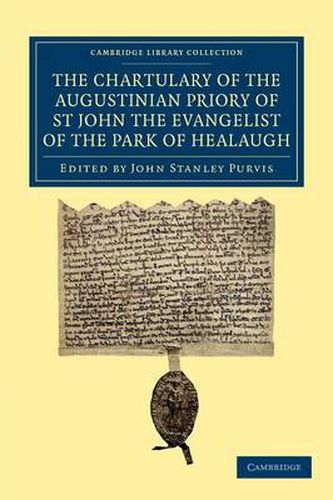Readings Newsletter
Become a Readings Member to make your shopping experience even easier.
Sign in or sign up for free!
You’re not far away from qualifying for FREE standard shipping within Australia
You’ve qualified for FREE standard shipping within Australia
The cart is loading…






Healaugh Park began as a hermitage in the twelfth century before being re-established as an Augustinian priory in 1218. It remained a small and poor community, with seven canons in 1381 and six in 1535. The Chartulary was compiled in the early sixteenth century, so it covers a much longer period than is usual. It comprises 194 folios, beginning with a pedigree of the Haget family, patrons of the house, a list of priors, and documents relating to Healaugh’s early history. There is no geographical or chronological logic to the arrangement of subsequent documents, nor any attempt to date them. The last twenty folios contain later material, mostly in English, which is interesting for the study of dialect and pronunciation at the time, and topographical information. Valuable to local historians, the Chartulary also shows how such small foundations struggled with financial and disciplinary matters. English summaries of the Latin documents are provided.
$9.00 standard shipping within Australia
FREE standard shipping within Australia for orders over $100.00
Express & International shipping calculated at checkout
Healaugh Park began as a hermitage in the twelfth century before being re-established as an Augustinian priory in 1218. It remained a small and poor community, with seven canons in 1381 and six in 1535. The Chartulary was compiled in the early sixteenth century, so it covers a much longer period than is usual. It comprises 194 folios, beginning with a pedigree of the Haget family, patrons of the house, a list of priors, and documents relating to Healaugh’s early history. There is no geographical or chronological logic to the arrangement of subsequent documents, nor any attempt to date them. The last twenty folios contain later material, mostly in English, which is interesting for the study of dialect and pronunciation at the time, and topographical information. Valuable to local historians, the Chartulary also shows how such small foundations struggled with financial and disciplinary matters. English summaries of the Latin documents are provided.